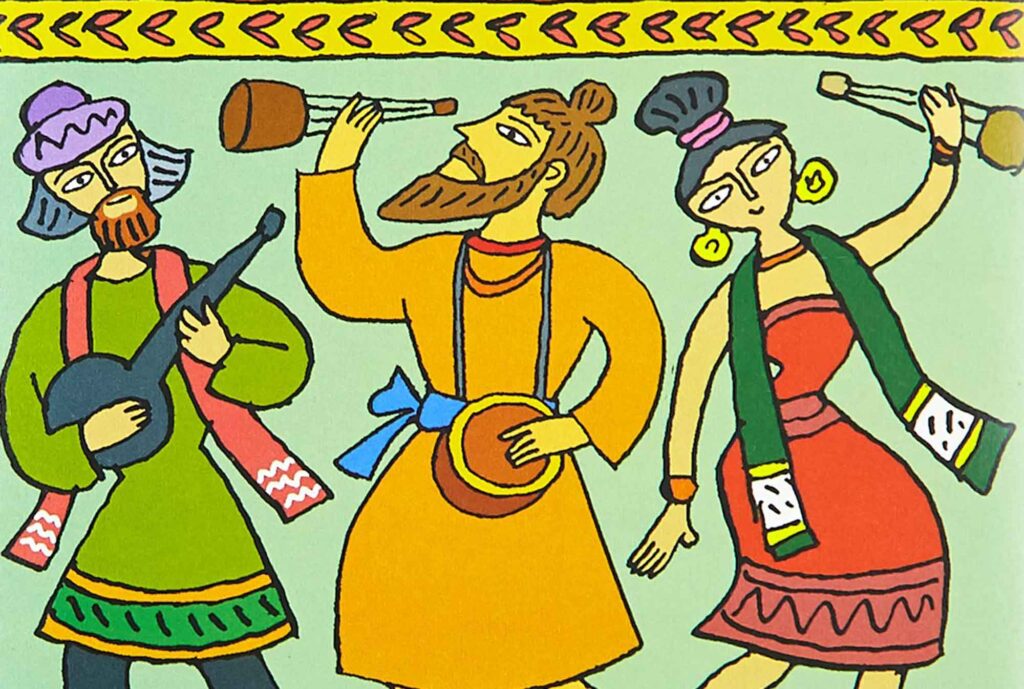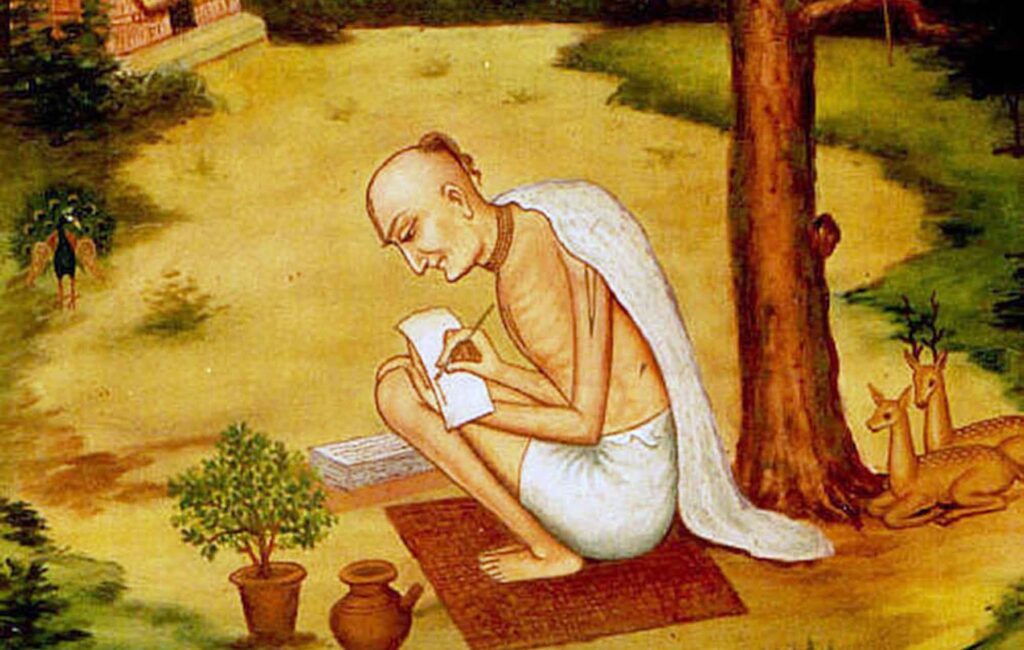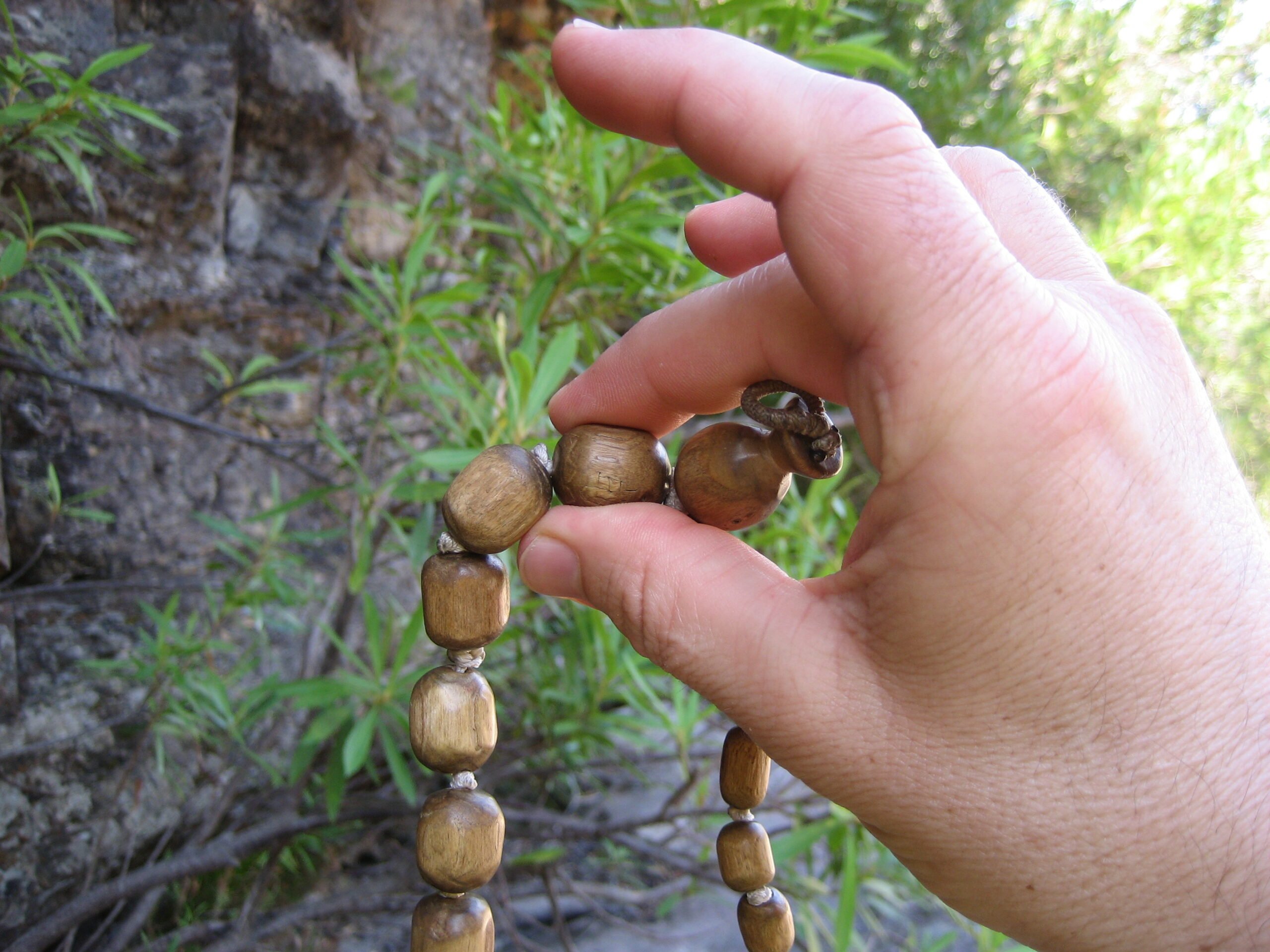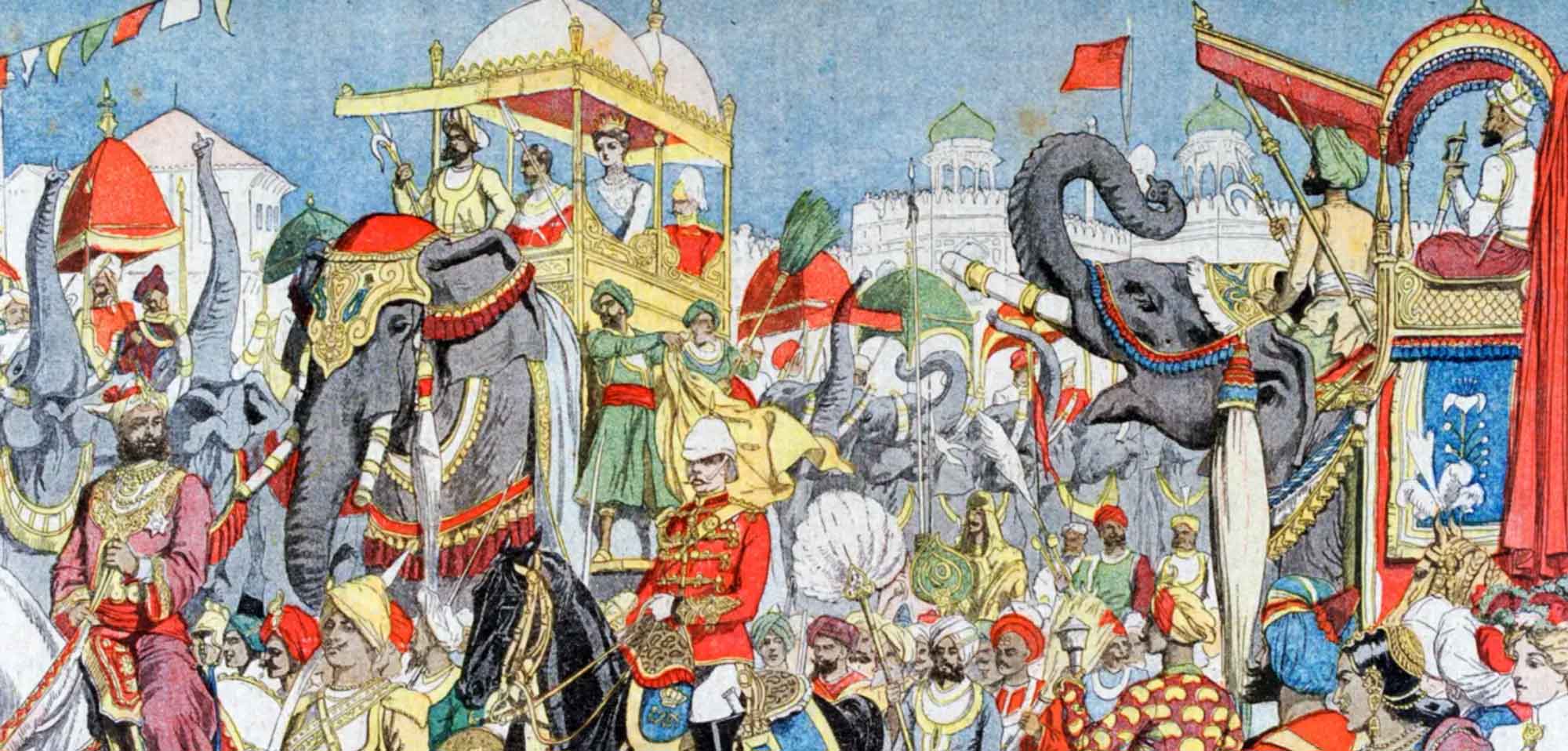Overview
‘Śrī Śrī Raghunātha Dāsa Gosvāmī’ was first published in Sajjana Toṣaṇī, Vol.2. Issue 10 in 1885. Herein, Bhaktivinoda Ṭhākura gives a brief account of Dāsa Gosvāmī’s life, his ideal renunciation and the pastime of his excavation of Śyāma-kuṇḍa and Rādhā-kuṇḍa.
(translated by Swami B.V. Giri)
The tenth and eleventh volumes of Sajjana Toṣaṇī have been published. The name of these two issues is the ‘Śrī Śrī Raghu-Kṛṣṇa-Śrīnivāsa issue.’ This year on the Monday 5th of Kārttika, is the disappearance observance of Śrī Raghunātha Dāsa Gosvāmī and Śri Kṛṣṇa Dāsa Kavirāja Gosvāmī. Raghunātha Dasa appeared in a kāyastha family. In his youth, this mahātmā felt great prema towards Śrī Śrī Gaurāṅga Mahāprabhu, and so he abandoned his wealth and young wife who possessed many good qualities, passed through the forest and reached Śrī Puruṣottama Dhāma in three days where he fell at the feet of Śrī Śrī Mahāprabhu. Mahāprabhu showed great happiness upon seeing Raghunātha and was supremely merciful to him. Raghunātha’s renunciation was extremely harsh. Mahāprabhu praised Raghunātha saying, “It is not possible for a jīva to emulate Raghunātha’s renunciation.” Raghunātha was indifferent – going to Śrīkṣetra, he would stand at Śrī Śrī Jaganāthadeva’s siṁha-dvāra with folded hands. People would give mahāprasāda–bhikṣā (a donation of mahāprasāda) in his folded hands. Once his palms were full of prasāda, he would go to his residence and eat it. Raghunātha was not satisfied with this type of rule. He thought, “Is not standing with folded hands at the siṁha-dvārā like the behavior of a prostitute? They stand on their doorstep to maintain their lives. Thus, I will not abide by such rules – I will maintain my life by eating the rejected stale prasāda. That supreme Vaiṣṇava Raghunātha started to do that.
One day, the merciful Caitanyadeva saw Raghunātha eating that rejected prasādam and asked, “Raghunātha, what are you eating?”
Raghunātha, without giving any other answer to Caitanyadeva’s question, said indistinctly, “Please instruct me?”
Caitanya-cāṅda, the indwelling Supersoul in all, laughed, and taking a handful of prasāda from his pot, ate it and said, “Raghunātha! Why have you deprived Me and eaten such nectar alone?” Raghunātha was especially reluctant to interact with Mahāprabhu in this way. Mahāprabhu’s pastimes with Raghunātha in Puruṣottama are not unknown to the wise Vaiṣṇavas.
With the permission of Mahāprabhu, Raghunātha went from Puruṣottama to Śrī Vṛndāvana Dhāma, where he joined Sanātana and the other Gosvāmīs and stayed on the banks of Śrī Śrī Rādhā-Kuṇḍa. Suddenly one night a dream arose in his heart that it would be good if Śrī Śyāma-kuṇḍa and Rādhā-kuṇḍa should be re-excavated. Reader! Is Śrī Kṛṣṇa ever hindered in fulfilling the desires of the devotees? In Badarikāśrama, Śrī Śrī Nara-Nārāyaṇa gave some gold coins to a man and ordered, “You give these gold coins to Raghunātha Dāsa, the main Vaiṣṇava in the village of Ārīṭ in Vraja Dhāma. If he refuses to accept them, then tell him that these gold coins were sent by Śrī Nārāyaṇa in Badarikāśrama. Take these coins and excavate Śyāma-kuṇḍa and Rādhā-kuṇḍa.” When the man came to the village of Ārīṭ on the order of Nārāyaṇa, he handed over the coins to Raghunātha, who refused to accept them. Then Nāryāṇa’s messenger approached him and told him everything. Raghunātha was astonished to hear about this and he began to weep crying out, “O Prabhu! O Nātha! O You who fulfils the desires of those who are surrendered unto You!” After he had calmed down, he summoned the residents of Vraja to begin excavating the two kuṇḍas. During their discussion, everyone said that there were some old trees on the banks of Śyama-kuṇḍa which would have to be cut down in order to make Śyama-kuṇḍa completely square. When the shape was established, Rājā Yudhiṣṭhira told Raghunātha in a dream, “Don’t cut us down. We five brothers are residing on the banks of Śyāma-kuṇḍa in the form of trees.” Due to this, Raghunātha did not cut the trees down. For this reason, when Śyāma-kuṇḍa was excavated, it became crooked. The amazing character of Śrī Śrī Raghunātha Dāsa Gosvāmī is not unknown to the Vaiṣṇava community. Thus, my pen will rest here.













